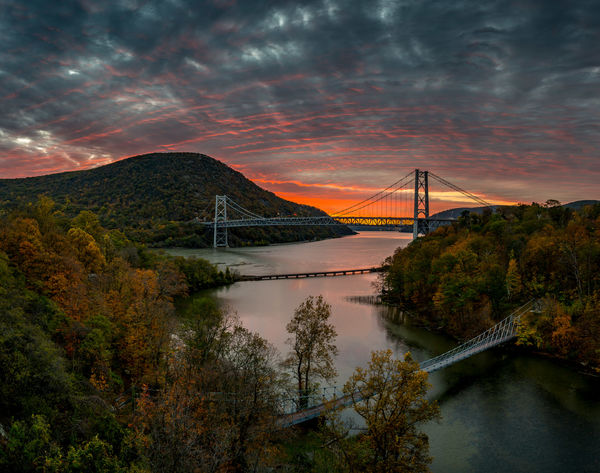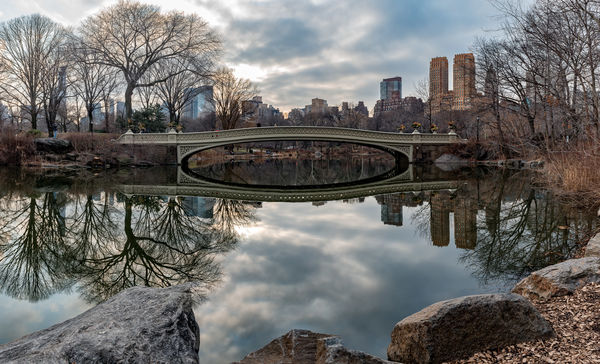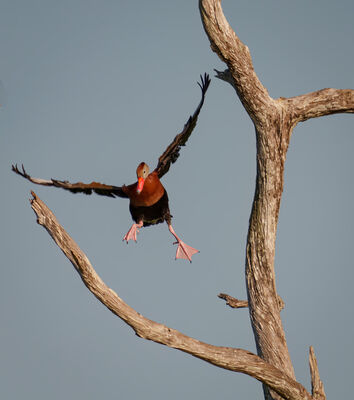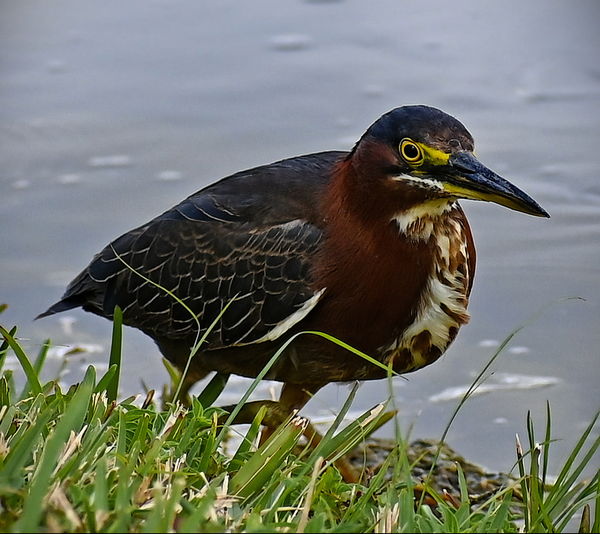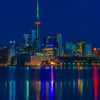Nikon 70-200mm 2.8 lens vs 18-300 mm 3.5-6.3 G ED VR Lens for a Nikon D850
Feb 18, 2019 05:21:25 #
alexskoz wrote:
I shoot landscape photos, Sunsets and Sunrises! What is your thoughts or suggestions in using these lenses? Is the quality of the photo any more or less with these lenses. Thinking of switching from 70-200 to 18-300. Thinking the 18-300 is more versatile. My photography is a serious hobby!
Thanks
Alex
Thanks
Alex
Doing landscapes you may find that at smaller apertures, say F8 onwards you may be getting softness form diffraction . Keep that 2.8 glass and have a look at stacking which is built into the D850 . Steve Perry has a couple of E-book about autofocus and includes a supplement that simplifies the use of stacking . Well worth it.
Feb 18, 2019 05:31:27 #
marty wild wrote:
I have the 70 to 200 @2.8 . Now then to be completely honest I love my glass but I need the DOF. But in landscape you do not need F 2.8! You need length, so in that case I would go for the 18 to 300. But are you on crop sensor? Remember the calculations, 1.5 Nikon and 1.6 canon. You are shooting Fx so the calculation is not an issue. My answer is across the spectrum of FX & DX Systems
This was a point of controversy on another thread. When you put a lens on a sensor that does not cover the entire area of the sensor the net effect will be a reduction of angle of view, not dissimilar from a crop. So, while most DX lenses fill the FX frame vertically, the do not fill the frame horizontally, and the edges are circular. The actual crop factor is less than 1.5, and with some DX lenses, like the 10.5mm Nikkor Fisheye, which will cover the FX sensor once you hack off (literally use a hacksaw) to remove the integrated, non-removable lens hood, and the 35mm F1.8 DX Nikkor, which covers the FX sensor with just a hint of vignetting in the extreme corners, there may be very little to no reduction in field of view.
Feb 18, 2019 06:10:27 #
billnikon
Loc: Pennsylvania/Ohio/Florida/Maui/Oregon/Vermont
alexskoz wrote:
I shoot landscape photos, Sunsets and Sunrises! What is your thoughts or suggestions in using these lenses? Is the quality of the photo any more or less with these lenses. Thinking of switching from 70-200 to 18-300. Thinking the 18-300 is more versatile. My photography is a serious hobby!
Thanks
Alex
Thanks
Alex
For landscapes I use two Nikon lenses. The Nikon 16-35 f4 about 90% of the time and the Nikon 24-120 f4. The 18-300 is a heavy sucker, so is the 70-200 2.8. If I had to choose between the lenses that you have listed I would choose the 18-300 because of the wide end and it has more range. It would not be a lens that I own however.
Feb 18, 2019 06:25:36 #
CO wrote:
Would you really use the 18-300mm on your D850? I just went on DXOMark and checked the perceived megapixels of the Nikon 18-300mm f/3.5-5.6 G ED VR on the high resolution D7100. It has 9 perceived megapixels. The Nikon 24-70mm f/2.8E ED VR has 20 perceived megapixels on a Nikon D800E.
The 18-300mm has an overall score of 15. The 24-70mm has an overall score of 29.
The 18-300mm has an overall score of 15. The 24-70mm has an overall score of 29.
The information you show on the DXO comparator is correct, but I am pretty sure the interpretation is not, since the screenshot clearly shows the 18-300 has a score of 15 pmp, on the D7100, and we have Tony Northrup to that for this with his video where he "explains" perceptual megapixels (pmp).
What pmp refers to is the percentage of resolution that a viewer will perceive with a given lens, compared to a "perfect" lens on the camera. On a 12.3 mp camera, like a 12.3mp D90, the "perfect lens" would produce a 12.3 pmp score. The perfect lens on a 24.3 mp D7100 would similarly show pmp score of 24.3. This is the basis for the pmp scoring system.
in the real world, there are no "perfect lenses."
The Nikkor 18-300 shows 9 pmp on a D7100 or 9/24.3 pmp, or 37% of the resolution the camera is capable of.
The same lens on a 12.3 mp D90 has a score of 6 pmp, or 6/12.3, or 49% of the resolution the camera can produce.
Another way to look at the pmp score is comparing a real score to the theoretical one using a lower resolution sensor and a perfect lens. Used in this fashion, the 9 pmp score of the 18-300 on a D7100 shows that it would be the same as using a perfect lens on a 9 mp camera, and the same lens on the D90 would be like using a 6 mp camera with a perfect lens.
DXO has no data on any DX lenses being used on a full frame camera, because typically no one does that.
Do these results imply that the 18-300mm is somehow less sharp on a lower resolution sensor? Absolutely not - what it does infer is that it allows more than 49% of a 12 mp camera's resolution capacity to come through, and that putting the same lens on a camera with higher resolution will be less successful. The score for the lens on the 24.3 mp camera clearly illustrates that. If you were to compare the images from both cameras, you'd likely see very little actual difference at normal viewing distances.
But the other consideration is how does a "better" lens perform on the D7100?
Not surprisingly, the excellent Sigma 18-35 F1.8 returns scores of 9 pmp on the D90 (73%), but 17 pmp (70%) on the D7100. This does not imply that the lens is less sharp on the higher mp D7100.
So, would it make any sense to get the Sigma (or any other known to be very high resolution lens) for a D90? Probably, since the lens will be a better match for a subsequent higher mp camera upgrade down the road.
This is how the DXO Mark rating system should be used.
This is an article that explains pmp with some other examples:
https://petapixel.com/2012/12/17/perceptual-megapixel-mtf-charts-boiled-down-to-a-single-number/
Feb 18, 2019 06:32:47 #
So now that you have "beat-up" a bit, the 70-200mm is a fine telephoto lens for sure. But Alex, you live in Arizona and you want to shoot landscapes (great place to do that, BTW). As a fellow "landscape guy," i get more mileage out of wide-angle lenses although I shoot tele about a third of the time. Nikon makes some very good wide-to-tele lenses that you might want to check out. Since you have 70-200mm covered pretty well, perhaps a 24-70mm (Nikon makes a honey) or 24-85mm would be good. Too lazy and only want to carry one lens? Many folks like Nikon's 28-300mm.
Feb 18, 2019 06:42:35 #
alexskoz wrote:
I shoot landscape photos, Sunsets and Sunrises! What is your thoughts or suggestions in using these lenses? Is the quality of the photo any more or less with these lenses. Thinking of switching from 70-200 to 18-300. Thinking the 18-300 is more versatile. My photography is a serious hobby!
Thanks
Alex
Thanks
Alex
I would not advise using a DX lens on an FX camera. In most cases, aside from the cropping (smaller image circle on the FX sensor), many DX lenses lack the build quality and optical performance of FX lenses.
I do a ton of landscape, and my go to lens is a 45mm PC-E, followed by a 85mm PC-E and a 24mm PC-E. But looking at my Lightroom catalog shows that I used the 45mm lens 3X more often than the other two combined. But I have also used a 14-24, 24-70, 80-200 for landscape. When using a 45mm lens, if I need a wider view, I shoot multiple overlapping images with the camera in portrait orientation and stitch them into a panorama in post processing. I find ultra-wide lenses to be less suitable for most landscape, but sometimes pretty interesting for certain subjects, or in situations where there isn't much distance to the subject to work with.
The first image is a 15 shot pano - (5 columns x 3 rows) I did with my 45 PC-E
The second image is a 3 shot pano, done with a 24-70mm at 24mm.
.
Feb 18, 2019 07:52:35 #
I strongly disagree with all of those who recommend against using a DX lens on a FX body. This advice is especially wrong for the D850 and Z7. Most of us never make large prints. The extra resolution of full frame is only useful if images are extensively cropped or printed to large sizes. Of course, using DX lenses reduces the ability to blur the background, but with long zooms this is often not an issue.
DX lenses are lighter, cheaper and optically adequate for most uses if one is not a pro photographer.
I've attached a picture from my under $400 Nikon AF-P VR 70-300 DX on a Z6. I am not a bird photographer and this was shot quickly this past weekend in my backyard, so from an artistic perspective it's not a good picture, but technically the camera and lens did a great job.
DX lenses are lighter, cheaper and optically adequate for most uses if one is not a pro photographer.
I've attached a picture from my under $400 Nikon AF-P VR 70-300 DX on a Z6. I am not a bird photographer and this was shot quickly this past weekend in my backyard, so from an artistic perspective it's not a good picture, but technically the camera and lens did a great job.
Feb 18, 2019 07:56:00 #
“DX lenses are cheaper, lighter, and optically adequate for most uses if one is not a pro photographer”.
I am not a pro photographer, but I like to pretend I am.
I am not a pro photographer, but I like to pretend I am.
Feb 18, 2019 08:12:05 #



--Bob
CHG_CANON wrote:
A serious photographer wouldn't consider using a DX lens on their 45MP full-frame body .... 

Feb 18, 2019 08:24:31 #
Feb 18, 2019 08:38:54 #
alexskoz wrote:
I shoot landscape photos, Sunsets and Sunrises! What is your thoughts or suggestions in using these lenses? Is the quality of the photo any more or less with these lenses. Thinking of switching from 70-200 to 18-300. Thinking the 18-300 is more versatile. My photography is a serious hobby!
Thanks
Alex
Thanks
Alex
I have a D810 and would never consider the 18-300 lens. I used the 28-300 lens for a short time and found the focus quite soft. Made a straight up trade for a Nikkor 80-200 f/2.8D which I subsequently traded to get a Nikkor 70-200mm f/2.8G VRII. One lesson you should learn is to NEVER buy variable aperture zoom lenses. Especially when you have a high-end camera body.
Feb 18, 2019 08:51:46 #
GoofyNewfie wrote:
Someone should take your D 850 away from you if you are asking this question. 

👍
Feb 18, 2019 08:58:52 #
DavidPine
Loc: Fredericksburg, TX
alexskoz wrote:
I shoot landscape photos, Sunsets and Sunrises! What is your thoughts or suggestions in using these lenses? Is the quality of the photo any more or less with these lenses. Thinking of switching from 70-200 to 18-300. Thinking the 18-300 is more versatile. My photography is a serious hobby!
Thanks
Alex
Thanks
Alex
The 70-200 f/2.8 FL lens is by far a superior lens and very versatile. Sunrise and Sunset images where compression is desired it is a good lens choice. For landscape shots, in general, I would use the Nikon 14-24 f/2.8 or Nikon 16-35 f/4.0.
Feb 18, 2019 09:17:38 #
bkwaters wrote:
I strongly disagree with all of those who recommen... (show quote)
I would not have a problem using something like a Sigma 18-35 F1.8 which offers excellent image quality on a high resolution FX camera, but the majority of DX lenses rarely approach this level of image quality.
An adequate lens, which certainly describes the Nikon AF-P VR 70-300 DX - in fact I would say it is better than average - and which may be adequate on a 24 mp FX camera, falls way short when it is used with a 45.7 mp camera when it comes to producing an image that fully leverages the extra pixels in the D850 or Z7. It defeats one of the reasons for buying a D850 or Z7 in the first place. Besides, the main advantage of having more than 12mp is for maintaining image quality while cropping - not making bigger prints. Bigger prints are often viewed at a greater distance, and unless you are an eagle with extremely high acutance vision, you are not likely to see the fine detail of a high ppi image at more than just a few feet.
This explains why this is true:
http://www.photokaboom.com/photography/learn/printing/resolution/1_which_resolution_print_size_viewing_distance.htm
It is basically incorrect to state that using a DX lens reduces the ability to have shallower depth of field. A 70mm DX lens will give you the exact same DoF as an FX lens on the same camera. You can verify this by looking at any DoF chart or calculator. Nowhere does the lens' image circle (FX vs DX) enter into the calculation. What you are describing is the result of using any lens (DX, FX or even bigger, like a PC-E lens) on a smaller sensor. Using an 85mm on an FX camera provides a given composition. Putting the same focal length on a DX camera requires the camera to be moved further away from the subject to achieve similar framing. The increase in distance is what results in greater depth of field. If you were to move the FX/85mm combo to the same position as the DX/85, the DoF will be similar.
Another often misunderstood fact is that at the same camera to subject distance, focal length and aperture - any lens will provide shallower depth of field - assuming you are making uncropped prints of the same size from each. You can easily test this or just use a DoF calculator.
DoF Master shows that at 25 ft, a 300mm lens at F5.6 on a DX camera will show a total DoF of .46 ft, and on an FX camera the DoF will be .69 ft, with the only change being the sensor size.
http://www.dofmaster.com/dofjs.html
My recommendation is to test a DX lens on the FX camera you intend to use it on. It may or may not be adequate.
Nice shot of the green heron, btw. Had you used a lens with higher resolution, you may have been able to dial back the sharpening a bit for an image that didn't have sharpening halos.
Feb 18, 2019 10:20:27 #
SuperFly48
Loc: NE ILLINOIS
Ya know....do what YOU want to do. You can go crazy researching lens and body reviews to the point ya get "paralysis by analysis". Rent the lens and play with it. When I upgraded from a D7100 to a D850, all I had were a Nikon 18-70 kit lens from my D70s days and a Nikon 18-200 DX VR that, by the way, quit focusing last October; and four manual focus Nikkors for film days; even borrowed an old Nikkor zoom just so I could play with my new "toy". Eventually I acquired a couple of Nikon FX lenses; have not replaced that 18-200 DX and probably will not. I shot my two DX lenses on my D850 and got acceptable results understanding the limitations. I use both bodies regularly. I have a current iteration Nikon 70-200 and use it on both bodies but mainly on the D7100 because I get more reach that way. 70-200 on a D7100 gives me approximately a 105-300 which is plenty of reach when I want/need it; and I like how quickly that lens locks onto my subject on either body. Whatever works for YOU! YOUR money; YOUR toys. There are enough "experts" on this site that you will never lack for "advice". You play in this sandbox long enough, you will get sand kicked in your face!!!!
If you want to reply, then register here. Registration is free and your account is created instantly, so you can post right away.



